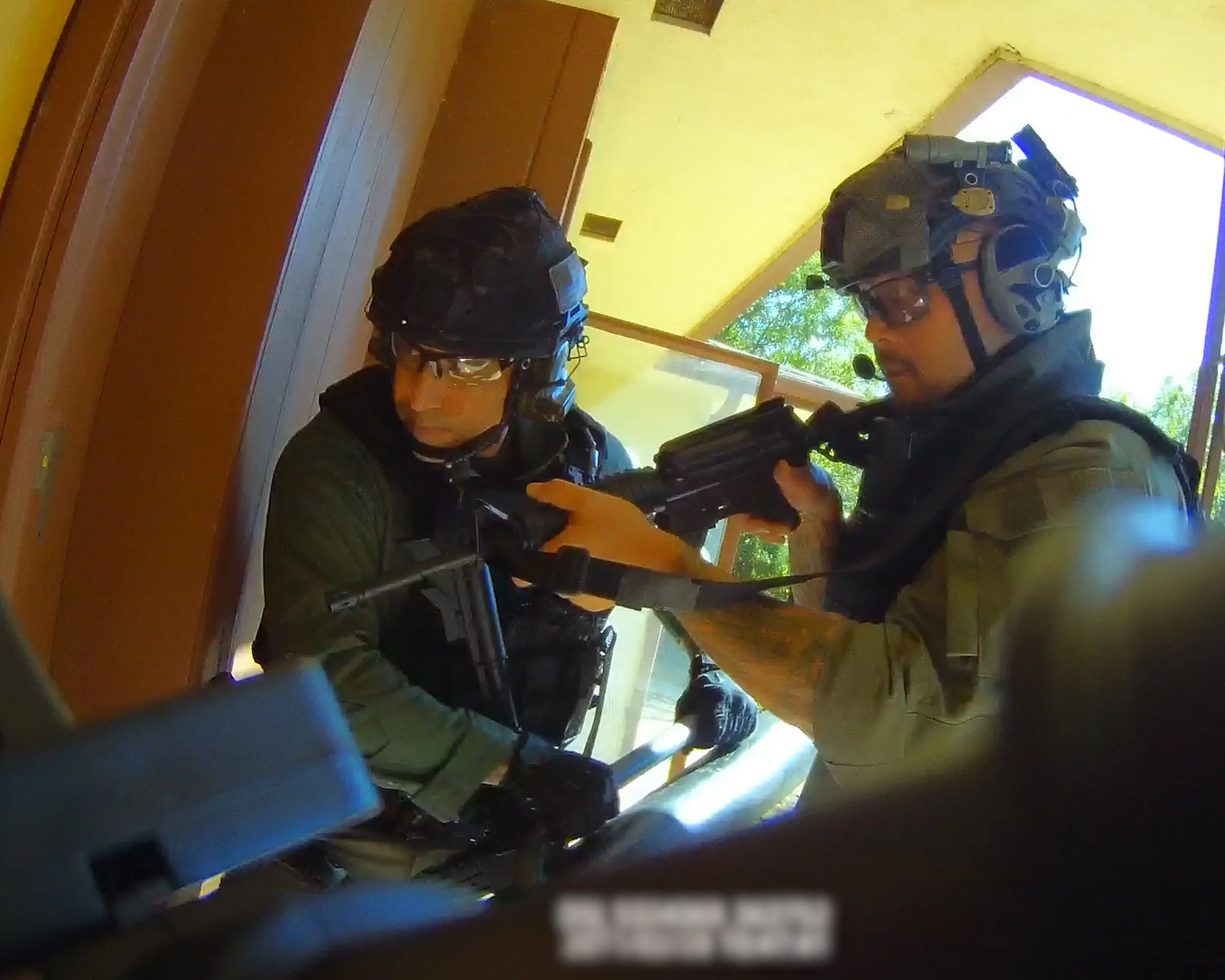Stuart Ortiz, best known for co-directing Grave Encounters, returns with a daring experiment in horror storytelling: a faux true-crime documentary that blurs the line between reality and nightmare. Strange Harvest (94 minutes, R) unfolds with such meticulous authenticity that, if stumbled upon mid-broadcast, it could easily pass for a legitimate investigative docuseries about a serial killer.
The story follows Detectives Joe Kirby (Peter Zizzo) and Lexi Taylor (Terri Apple) as they unravel the return of “Mr. Shiny,” a sadistic killer whose ritualistic murders are tied not just to occult symbolism but to forces of a distinctly cosmic persuasion. From the opening disclaimer, which playfully insists on its authenticity, to the closing overhead shots of San Bernardino freeways, Ortiz commits fully to the illusion.
Formally, Strange Harvest is a mashup of Netflix true-crime aesthetics and Lovecraftian horror. Ortiz and cinematographer Seth Fuller assemble the film out of chest-cam police footage, local news reports, drone flyovers, Zoom calls, and even deer-cam captures. The attention to detail is startling: set dressing looks lived-in, makeup on victims (particularly Glen Sandweiss’s burned visage) is unsettlingly believable, and the interviews carry just enough awkward imperfection to mimic real local news packages.
The pacing, however, is where Strange Harvest stumbles. Netflix documentaries often build momentum by threading revelations seamlessly into cliffhanger beats, but here the rhythm is disrupted by a repetitive cycle: as soon as the narrative heats up, another corpse appears, and the cycle restarts. It’s effective in building dread but occasionally saps forward momentum.
Still, when the film lands, it lands hard. The viral-ready “mask reveal” in which Mr. Shiny interrupts a makeup tutorial and stares directly into the camera before executing a ritual killing is among the most chilling sequences in recent horror. The mask itself, crudely resembling a worn leather seat cushion, is simple yet unforgettable. Later set pieces, such as a death display arranged in almost an art installation fashion, highlight the creativity of the practical effects team (led by Josh Russell).
Beyond its visceral impact, Ortiz uses the mock-doc form to probe deeper questions: Why are we so obsessed with true crime? What comfort do we get from dissecting the lives of monsters? And what happens when the unknowable, the occult, the cosmic, defies even forensic analysis? By the time the detectives start grappling with a mythology that feels larger than their investigation, the film has slipped fully into the territory of cosmic horror, echoing Zodiac but with an otherworldly tilt.
The film isn’t flawless. A few continuity goofs (a modern car parked in “2011” footage, a news chyron declaring a temperature of 74° Celsius) chip at the illusion, and some performances veer toward camp. But these quirks are almost forgivable in light of how immersive the overall package feels.
Ortiz’s gamble pays off. Strange Harvest isn’t just a grisly mockumentary; it’s a sly commentary on our addiction to true crime, the porous boundary between fact and fiction, and the primal fear that some horrors, whether human or cosmic, will forever resist explanation.
Jessie Hobson






